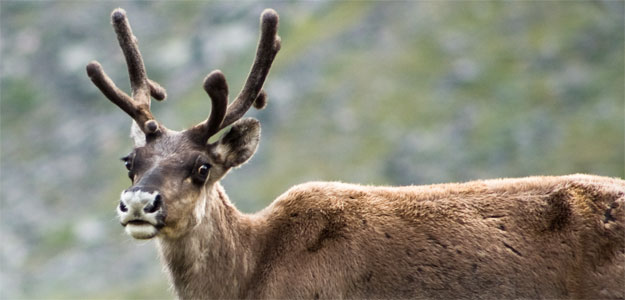
Kill The Predator, Save The Prey
 Canada took a step towards safeguarding its wildlife with the Species at Risk Act, but now the government that vowed to protect
all species appears to be violating its promise. With reports of wild horse deaths and wolf slaughter as a result of their efforts,
many in British Columbia are wondering just how effective the government response really is. (Photo Courtesy of Alexandre Buisse)
Canada took a step towards safeguarding its wildlife with the Species at Risk Act, but now the government that vowed to protect
all species appears to be violating its promise. With reports of wild horse deaths and wolf slaughter as a result of their efforts,
many in British Columbia are wondering just how effective the government response really is. (Photo Courtesy of Alexandre Buisse)
By Anne Sherrod
Since 1992 Canada has had a law to regulate trade in wildlife. The goal is to prevent species at risk from being driven relentlessly into extinction by the sale of pets, trophies or organs for medicinal uses. Amongst the regulated animals, there are snow leopards, of which there are 4,500-7,350 animals in East Asia; black rhinoceros - 3,725 animals in Africa; and Giant Pandas - 1,600 in China.
These regulations are undoubtedly a burden to poor people in Third World countries that could make a living (temporarily) by killing and selling off their wildlife (until they don't have anymore.) But the wealthier countries said: "Your wildlife is a world heritage and it is our responsibility to see to it that they are not wiped off the face of the Earth. You must find sustainable ways to support the human population."
Unfortunately there are, worldwide, a huge number of species on death row because the marketplace is eating up their habitat. Hypocritically, Canada is doing very little to save its own species at risk from this fate, and repeatedly the government uses economic justifications. Canada's Species at Risk Act is nearly toothless, and the few helpful aspects of it are not being implemented. Since the law was created about six years ago, out of more than a thousand species at risk, only one (a tiny snail) has had full implementation of this law.
In British Columbia there is a unique ecotype of caribou found nowhere else in the world. There are only about 1,600 left, where once there were large herds. Scientists agree that the chief cause of their decline is logging. Vast areas of mountain caribou forest have been converted to a patchwork of clearcuts, drastically reducing the mountain caribou's food supply, shelter and ability to hide and flee from predators. Logging roads open access to hordes of snowmobilers who displace the caribou from what little quality winter habitat they have left, while helicopters bearing skiers also fly overhead, causing the caribou to flee.
BC has refused to stop, or even significantly reduce, the rate of logging. Instead it cynically blames wolves and other predators for the disappearance of the caribou. Recently the public was shocked to learn that the BC government has been paying aboriginal people to kill the famous Chilcotin wild horses so the carcasses can be used to bait and trap wolves as part of the mountain caribou recovery program. (Vancouver Sun, Dec. 06, 2008) Most of the wolves are killed. Subsequent investigation by the Sun showed that the BC government had killed 24 wolves over the past year alone. (Vancouver Sun, Dec. 15, 2008)
Nineteen environmental groups have signed a letter to government totally opposing predator killing as a way to increase the number of endangered mountain caribou. Fifty-one scientists have signed a petition saying that predator control is being overemphasized. They recommend nonlethal predator control by closing logging roads and banning snowmobiles and skiers from caribou habitat. All these groups and scientists said the top priority for caribou protection was an immediate end to logging old growth forest.
As a result, last year the government promised sweeping protection of caribou habitat. But most of the protection would be in high subalpine areas. Only 0.7% of the timber harvesting land base would be protected, leaving ancient inland temperate rainforest hundreds of years old to be destroyed by logging. In the meantime, the government has launched a campaign to wipe out wolf packs and subject other predators to increased killing.
The public has sent 12,000 letters to the government on this subject, many of them asking for an end to logging old-growth forest. However, the government is shielding itself from public opposition with an agreement it brokered between the timber industry, snowmobile clubs, heli-ski businesses and a coalition of ten environmental groups called the Mountain Caribou Project. These interests all agreed to limit habitat protection within the boundaries of "no net loss" to the timber industry. In many cases, snowmobile clubs would receive contracts to monitor their members rather than banning them from caribou habitat.
But one wonders how long any group calling itself an environmental organization can continue to allow itself to be used in this way. Fifteen months after the agreement was announced, there is no approved plan, most areas of the mountain caribou range have no new habitat protection, and the government is relying upon the slaughter of wolves to boost the numbers of mountain caribou. People who care about wildlife must raise their voices against the killing of the wild horses and wolves, and demand a mountain caribou plan that will end the destruction of the old-growth forests of the Inland Rainforest Region.
Anne Sherrod is Chairperson of the Valhalla Wilderness Society and a Director of Valhalla Wilderness Watch. For more information on the topics discussed in this article please see www.inlandtemperaterainforest.org.


